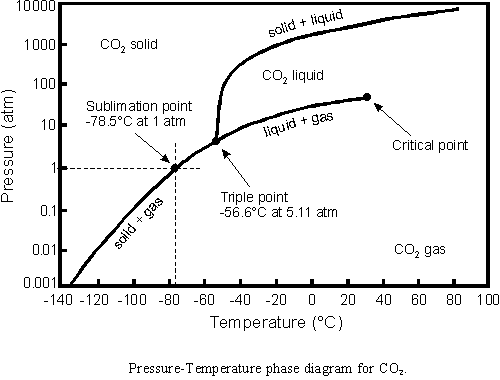Recently, the experimentalist portion of my group was looking to form supercritical liquid CO2 in an autoclave, and before purchasing expensive pre-pressurizing equipment, wanted to try dry ice. Logistically, the easiest thing was for me to stop by a grocery store and pick some up. Unfortunately, the experiment failed, and I took the extra home, where I discovered Mr. ME had never played with it.Thus, I am reminded of it's basic spiffiness.
Dry ice is spiffy for a number of reason, but mostly, because it sublimates at standard temperature and pressure conditions. Sublimation means it skips directly from the solid phase to the gaseous phase, hence the name "dry" ice. If you live in a dry climate with decent sunlight, you can also observe the sublimation of snow (sunlight is necessary to reflect off the vapor and make it visible). It only happens in dry conditions, though, when the vapor pressure of water in the atmosphere is sufficiently low.
Phase diagrams for materials like dry ice describe the state of the materials as a function of temperature and pressure, as shown below. These diagrams are created by simultaneously solving the Gibb's energy equations for different structures and looking for boundary conditions where two or more phases are stable.

Sadly, personal experimentation has demonstrated that while it will not dilute your martini or whiskey, dry ice won't make it terribly chilled either. I suspect this is due to the Leidenfrost effect. I will just have to cave and order these.
It's also really good for stuffing into a 2.0mL eppie and slipping into someone's pocket.
ReplyDelete